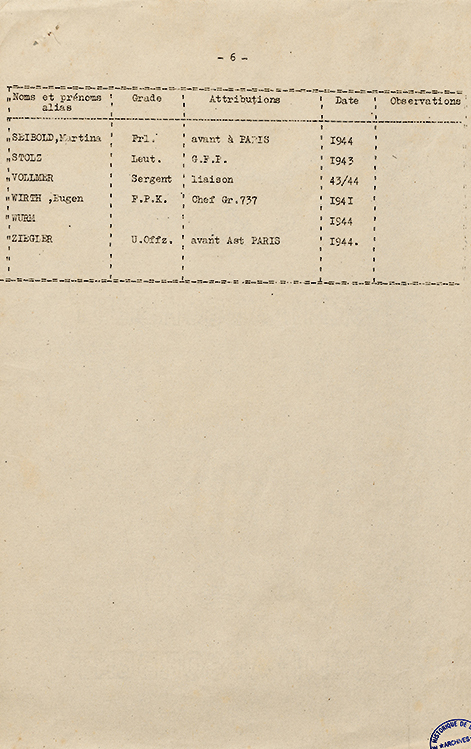The guardian angel of the V1s
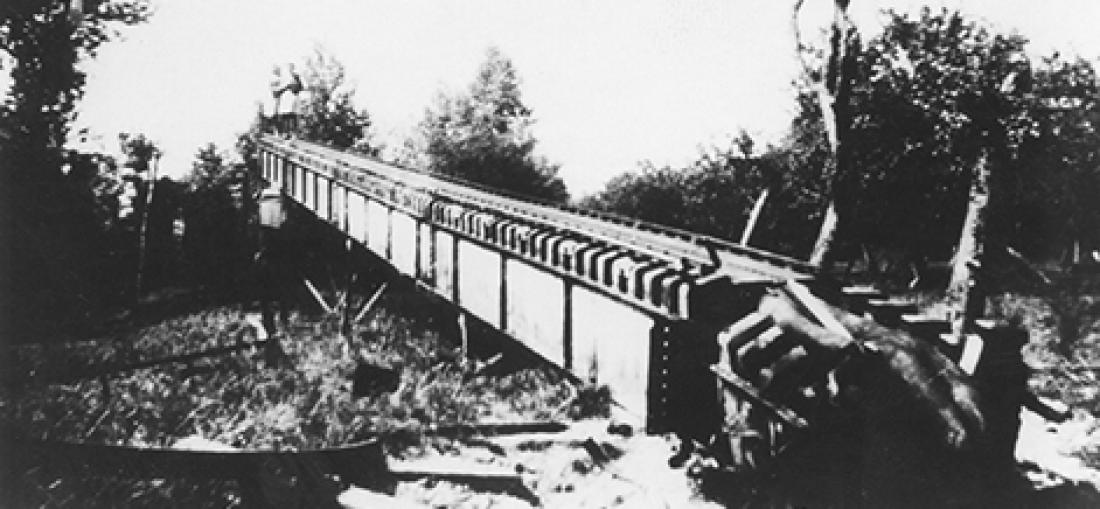
In Hitler's mind, the ”V weapons” were to change the course of the war. The design and conditions of use of these ”miracle bombs” (Wunderwaffen), a type that was revolutionary for the period, were among the Reich's most closely-guarded secrets. An exceptional service was entirely dedicated to protecting this secrecy. The French special services nicknamed it ”the guardian angel” of the V1s. Analysis of the archives has lifted the veil on this hitherto-unknown organisation.
”The guardian angel” of the V1s was the nickname given to the Arras Abwehr's special counter-espionage service in the title of a report by the Direction générale des études et recherches (DGER, Directorate General of Studies and Research) dated 31 October 1945 and conserved by the Service historique de la défense (SHD, Defence Historical Service). The name, though slightly reductive, perfectly summarises the specific mission allocated to the Arras Ast between December 1943 and the liberation of the country.
Protecting the secret of the V weapons
The mission of the ”guardian angel” was to protect and defend the special Nazi sites in France constructed for the operational use of Hitler's new weapons, the Vergeltungswaffen (reprisal weapons, see slideshow): the V1 flying bomb, the A4-V2 rocket and the V3 long-range cannon. The ”guardian angel” of the V1s was also responsible for ensuring the security of convoys from Germany carrying supplies for the firing sites. First-hand archives about this organisation are extremely rare. This document, produced on the basis of interrogations of the service's agents by the Direction générale de la sûreté nationale (DGSN, Directorate General of National Security), describes the specific character of this Abwehr in Arras and describes its area of competence and organisational structure. It is thus an archive of huge importance, but it has its limits - for example, it ignores a major part of the mechanism of repression installed in France as part of the operation.
In autumn 1943, Hitler's projects designed to bring England to its knees and reverse the course of the war became a major priority. General Erich Heinemann, the commander of the 65th German army corps (LXV AK) responsible for deploying the V weapons in France, imposed a drastic reorganisation of the protection system. During an inspection of one of the V1 launch bases, Heinemann was horrified to find civilians workers and French contractors on site. To increase security, he initiated the creation and installation in northern France of a specific mechanism of repression that would have dramatic consequences for the local and national resistance (see slideshow).
”The guardian angel”: an unusual organisation
Based in Arras, the organisation consisted of an Abwehr counter-espionage service (Ast 430), a self-contained military police unit (Geheimefeldpolizei 716) and a special tribunal, the Sondergericht beim LXV AK. Its sole mission was to protect the launching sites for V weapons in France, from the tip of the Cotentin peninsula to the Belgian frontier, and above all it had authority over all the other German police forces in its sphere of operations, including the SIPO-SD. The Arras Abwehr would now cause great damage to the major resistance organisations reporting intelligence on special construction to the Allies in London: the Organisation civile et militaire (OCM, Civilian and Military Organisation), but also the Alliance, Cohors-Asturies, Mithridate, Centurie, Jade-Amicol and Claude François networks and Zéro-France, the large Belgian network. Following interrogation, resistance members compromised in espionage cases relating to the V weapons were sent to the special court of the 65th German army corps. This military court, which sat successively in Arras, Lille, Paris and Belgium, was unusual in maintaining total secrecy about its activities. The identities and sentences of the people condemned were never communicated. The fate of these patriots was not discovered until after the Liberation, in carefully disguised mass graves in Arras, Lille and the cemetery of Ivry in the Paris region.
A formidably efficient organisation
The losses were terrible: during the eight months of the occupation in 1944, about a hundred people were deported and 63 shot. A dozen or so resistance members disappeared completely, including Jacques Simon, the OCM delegate on the Conseil national de la Résistance (National Resistance Council). When the bodies were discovered following the Liberation, the care taken to prevent their identification was clear. One mass grave at the citadel in Arras contained twelve senior national Resistance figures, including Jean Cavaillès. A well-known philosopher and a professor at the Sorbonne, as well as the founder of the Cohors-Asturies intelligence network, he was arrested on 28 August 1943 in Paris. He was condemned to death by the ”guardian angel” court and shot on 5 April 1944 at the Arras citadel, where his body was only identified by his sister in June 1945, almost a year after he was exhumed.
To increase the terrorising effect, the organisation had no hesitation in transferring resistance members arrested throughout France, making them ”disappear” in Nord-Pas-de-Calais, Belgium or Germany. Four Compagnons de la Libération (recipients of the ”Companions of the Liberation” honour) were among the victims, two of them shot at Arras (Colonel Touny and Jean Cavaillès).
Unknown until recently, the activity of the ”guardian angel” of the V1s against the national resistance proved particularly effective. The DGER report conserved by the SHD rightly concludes that ”the activity of this Ast, which remained active until the last moment, was positive and it succeeded in making the areas under surveillance very difficult to access” (see slideshow).
Laurent Thiery
Doctor of history,
historian at La Coupole, the Nord-Pas-de-Calais centre of history and remembrance
FOR MORE INFORMATION
The technical manual for counter-espionage at Ast Arras, conserved under the record number GR 28 P 7 172, can be consulted in the reading room.
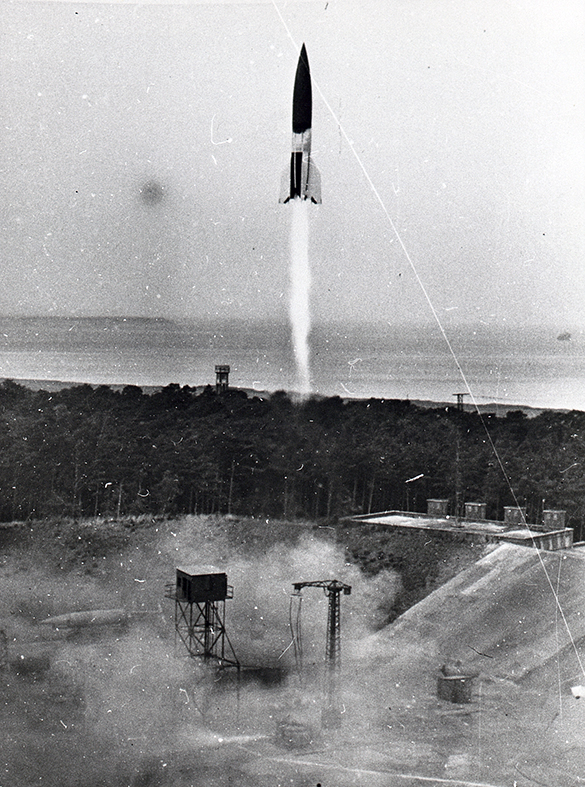
Fusée A4-V2.
© La Coupole
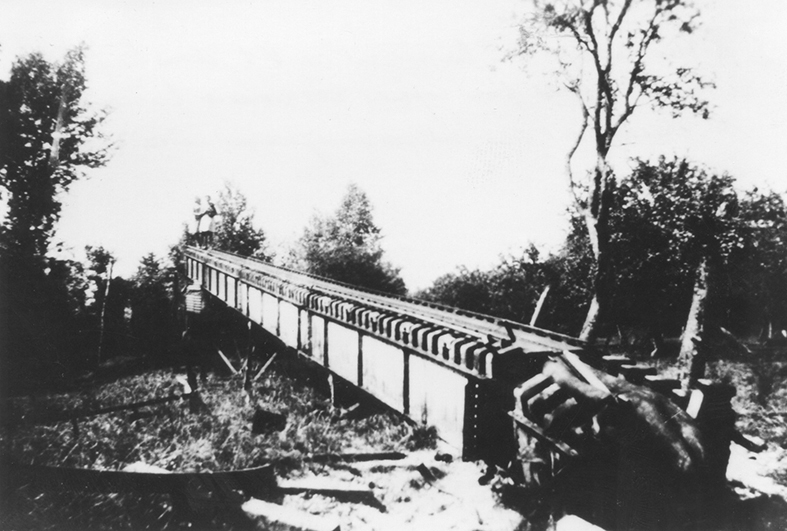
Rampe de lancement V1.
© La Coupole
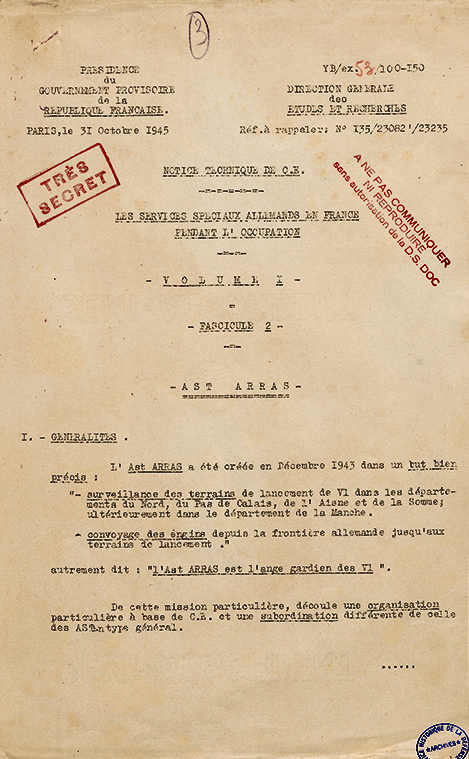
Notice technique de contre-espionnage sur l'Ast d'Arras, 31 octobre 1945, p. 1.
© SHD
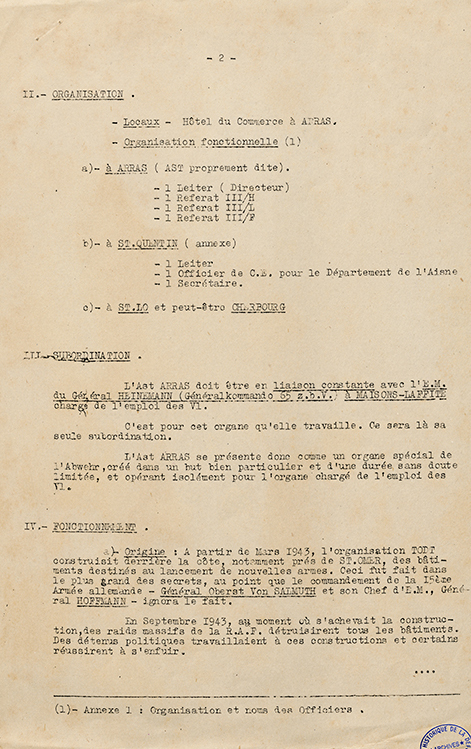
Notice technique de contre-espionnage sur l'Ast d'Arras, 31 octobre 1945, p. 2.
© SHD
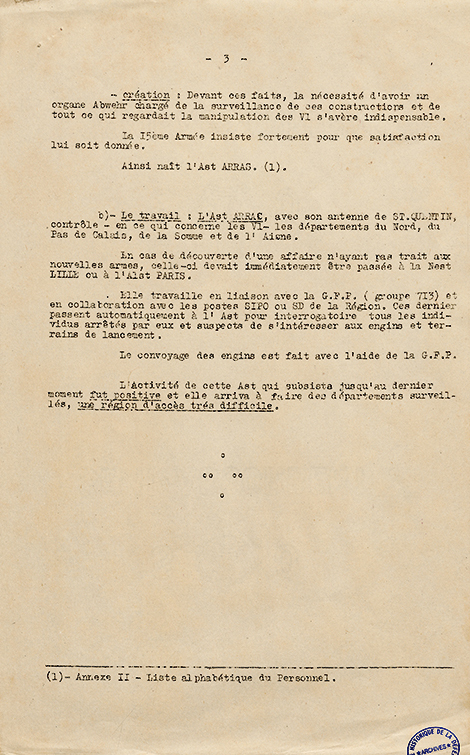
Notice technique de contre-espionnage sur l'Ast d'Arras, 31 octobre 1945, p. 3.
© SHD
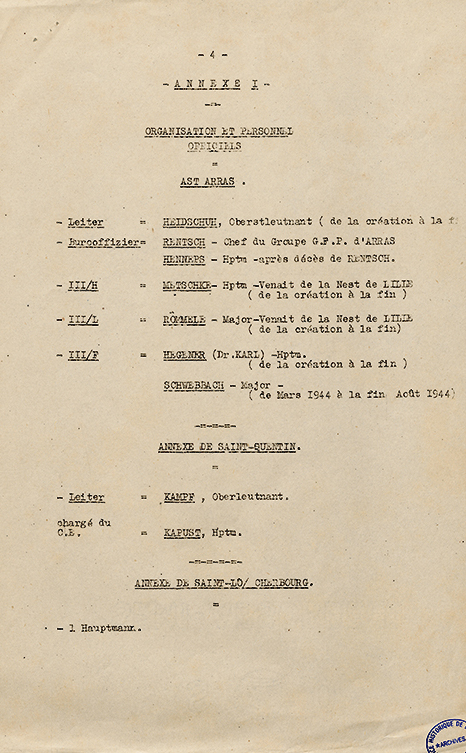
Notice technique de contre-espionnage sur l'Ast d'Arras, 31 octobre 1945, p. 4.
© SHD
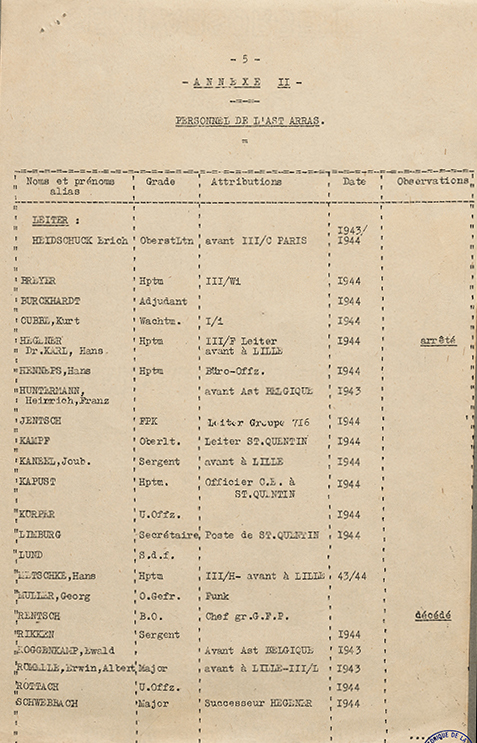
Notice technique de contre-espionnage sur l'Ast d'Arras, 31 octobre 1945, p. 5.
© SHD
